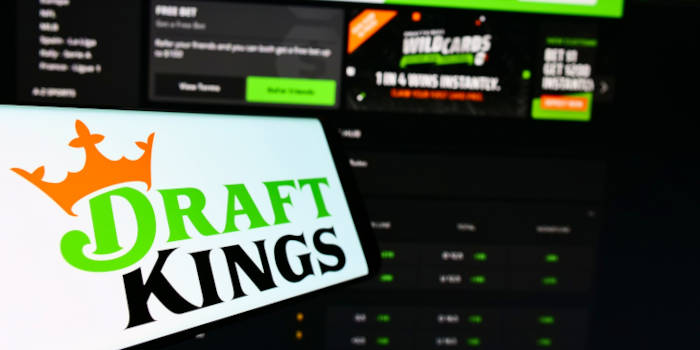DraftKings CEO Tweets Provocative Message Aimed at Stock Sellers

DraftKings’ shares took their seventh consecutive daily plunge on Tuesday when they dropped to $17.38. That same evening, the company’s chief executive officer, Jason Robins, posted a provocative message on Twitter. The message was aimed at people who may decide to sell their shares in the sports betting company amid this continuous drop.
DrafKings’ Ongoing Share Drop, Not Indicator of Performance
When the company closed at $16.56 in February 2022, it marked its lowest number in the past 12 months. Then, Robins argued the plunge was not a direct reflection of the company’s performance. He justified the decrease as an expression of the instability of the stock exchange market. He also reiterated that the company would keep operating while holding out hope for the market to start catching on once again.
DraftKings managed to briefly pause its ongoing freefall after hitting the February low. On March 1, the company’s shares were valued at $25.01. However, almost a year ago, the same shares were sold for $74.38 apiece.
This time, Robins’ new message on Twitter sounded a lot harsher. In it, Robins warned people planning on selling their DraftKings shares to be wary of the company’s “mission” to make sellers “regret their decision more than any other decision” they ever made. The controversial tweet came shortly after John Staszak, a security analyst for Argus Research switched his DraftKings recommendation to “hold”. Argus Research is an important investment research company offering US economy and company ratings and forecasts. Staszak’s decision was a direct reflection of the fact that Argus has stopped considering DraftKings a good buying target.
While Robin’s frustration may seem justifiable, some newbie investors who recently started their first stock exchange venture with DraftKings shares may feel bullied into holding on to their stocks. In the context of the high inflation rates and economic uncertainty lingering over our heads worldwide, some of these investors may feel compelled to sell their shares as soon as possible. While they may not have been Robins’ direct Twitter “targets”, these people also received the powerful message that will most likely keep ringing in their ears for a while.
Can DraftKings Still Make a Profit?
In February, DraftKings officially announced its year-end and Q4 financial results, reporting a $1.3 billion year-to-year revenue that more than doubled compared to last year’s numbers. Nonetheless, the company’s marketing costs also nearly doubled compared to last year’s figures, and the same happened to a series of other costs.
Thus, the betting company that operates in 17 US states had to adjust its Earnings Before Interest, Taxes, Depreciation, and Amortization (EBITDA) expressed a $676.1 million net loss. DraftKings announced that the expected EBITDA for 2022 would be anywhere between $825 million and $925 million, depending on the success of the upcoming Louisiana and New York launches. The company’s expenses also skyrocketed as DraftKings had to gain more market share and acquire new customers for the new markets. Nonetheless, the company continues to remain hopeful about turning a profit starting sometime in Q4 2023. Last summer, the company recorded a minor uptick in shares at the beginning of the football season. Plus, in spite of the COVID-19-driven limited number of betting alternatives available in the spring of 2020, the company’s shares also managed to climb sharply.
These examples could show that a sudden increase in DraftKings shares wouldn’t be too far-fetched in the upcoming months, amid the launch of new markets. Last December, DraftKings was named the most visible sportsbook across all US states, according to a poll completed by a global market research company.
After finishing her master's in publishing and writing, Melanie began her career as an online editor for a large gaming blog and has now transitioned over towards the iGaming industry. She helps to ensure that our news pieces are written to the highest standard possible under the guidance of senior management.














